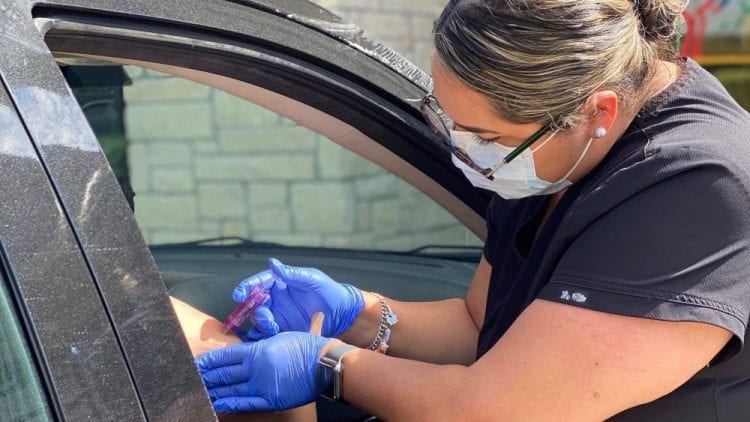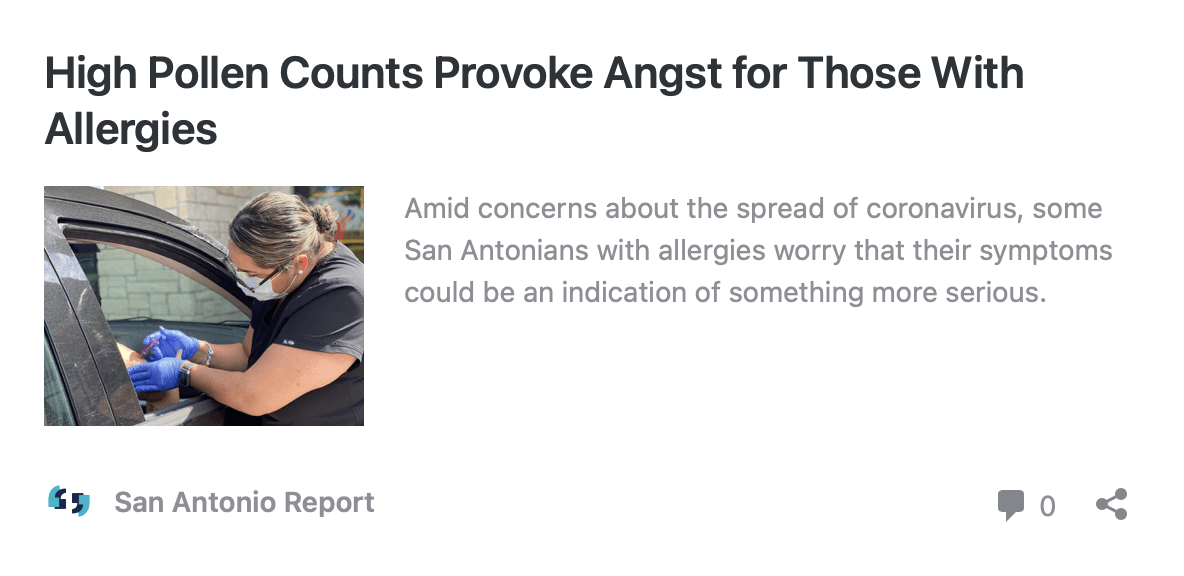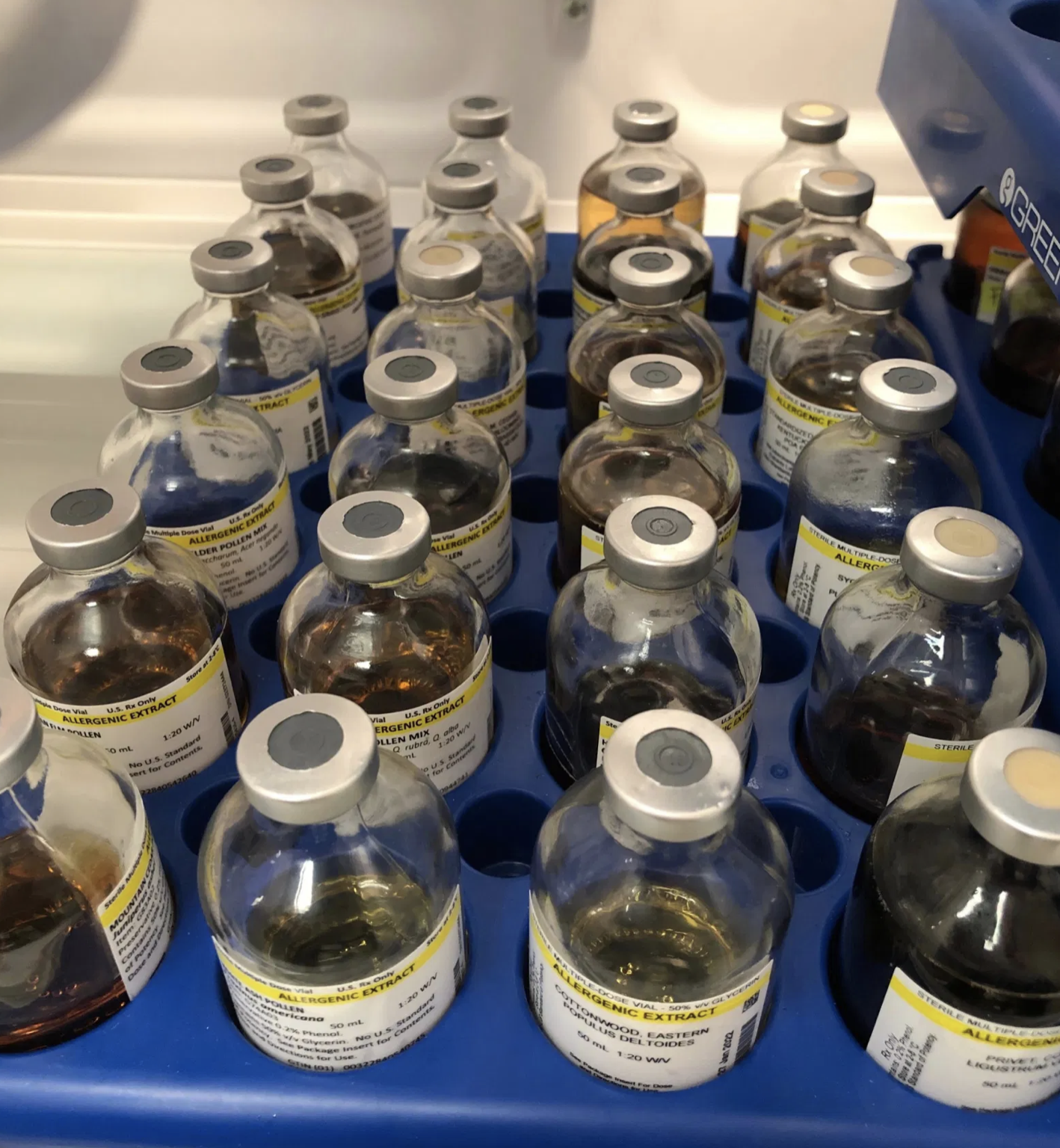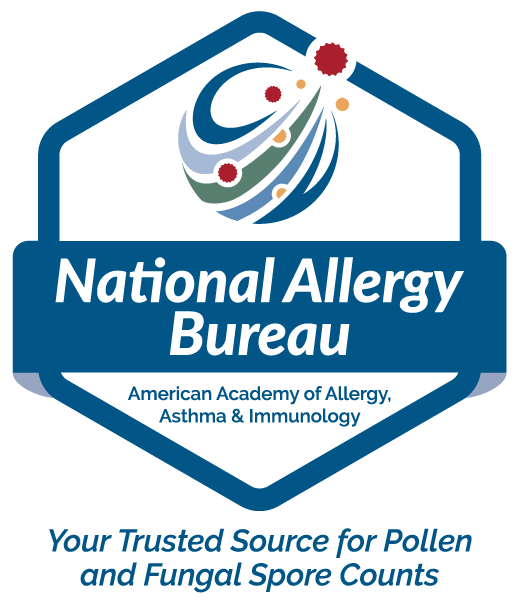

This story was originally published by San Antonio Report and can be found here.
San Antonio saw whopping pollen counts over the past week, with oak dust skyrocketing to 30,900+ parts per billion on March 30 – some of the highest counts in a decade.
The severe pollen load has made those who suffer from allergies wonder if they are more vulnerable to the novel coronavirus than those who manage to escape the seasonal sniffling, sneezing and itchy eyes common to the Alamo City, which is considered an allergy hotspot.
“I’m probably super paranoid like most since all this COVID-19 viral pandemic, but I started feeling a sore throat coming on and I’m freaking myself out,” Nikki Rabon posted in the San Antonio Covid-19 Coronavirus Community Care Facebook group. “Anyone else? Probably just allergies….”
Rabon’s comment generated 143 comments, including this one from Anne Therese Cakins: “I suffer from allergies and asthma…I freak myself out on the daily! Trying to stay calm, though.”
“People are rightful to be anxious,” said Dr. Erika Gonzalez, CEO and president of South Texas Allergy & Asthma Medical Professional. Symptoms for allergies and coronavirus are similar, but the immune mechanism behind allergies is not the same one that would be involved with coronavirus.
Generally, those with seasonal allergies endure itchy eyes, runny nose, sneezing and wheezing and possible shortness of breath. Coronavirus symptoms generally include dry cough, tiredness, and fever.
“If you get a fever, it’s not allergies, but some type of viral infection,” said Gonzalez. “Sneezing and itching – those are ‘good signs’ that it’s allergies and not viral.”
People with allergies generally have stronger immune systems than nonallergic folks, since their bodies are overreacting to perceived threats, said Dr. Robert Ramirez, immunologist with the Certified Allergy Asthma and Immunology Center.
“It takes a strong well-coordinated immune system to pick out allergens in our environment to mount immunity against,” said Ramirez. “I often use the word ‘bias’ when describing how and why the immune system would attack these seemingly harmless targets.”
That said, when pollen levels get this high, even people who are not allergic to oak will begin to have allergy-like symptoms. “This reaction is more of an irritant or pollutant response rather than an allergic mechanism,” Gonzalez said.
Those receiving allergy treatment, however, are wondering if it’s wise to continue receiving allergy shots given coronavirus social distancing guidelines.
Typically, allergy treatment involves getting injections of specially concocted serums that allow patients to gradually build their immunity to allergy-causing compounds. At the beginning of treatment, injections are generally administered multiple times a week. Over time, the dose is increased and frequency reduced. This can take several years, involving a shot once every month or less.
A routine allergy shot requires heading to a doctor’s office, signing in, waiting your turn, getting an injection, then sitting for 30 minutes in the waiting room to make sure no adverse reaction to the shot occurs.
Allergy doctors have had to adapt to a new reality in the wake of the coronavirus pandemic. Ramirez is administering allergy shots and injectable biologics in the office breezeway of his practice’s Lincoln Heights location.
“They drive up, they call us, we come outside and meet them in the covered breezeway, and they wait the 30 minutes in their car,” said registered nurse Jackie Sorenson, adding that the office only takes one patient at a time.
Gonzalez is offering “drive-thru allergy shots.”
Established patients call the doctor’s office from the parking lot. A medical assistant draws up the patient’s custom allergy serum, dons PPE, then goes out to the car to administer the shot.
“The patient then waits in the car for the appropriate amount of time, and upon completion of their waiting period, our medical assistant goes out to the car to check in on them and discharge them home,” said Gonzalez.
If patients prefer to come into the clinic, they can stay in the waiting room where chairs are spaced at least six feet apart. “We keep the number of patients at a minimum and don’t have more than one or two patients in the clinic at the same time,” said Gonzalez.
When consultations are necessary, doctors are adopting telemedicine.
“Telemedicine is something that a lot of doctors have considered incorporating at some point in their careers,” said Ramirez. “Now, with the loosening of restrictions by Governor Greg Abbott, it’s easier to implement,” he said, referring to the governor’s March 17 waiver of restrictions on telemedicine. Doctors and insurance companies can now charge and collect for phone visits just as they would for in-person visits.
With recent rains, sunny days, and longer, hotter seasons ahead, high pollen counts will continue through May, perhaps longer.
“Global warming has prolonged all our pollen seasons and made them worse in the sense that they linger for a longer time,” said Gonzalez.
In the meantime, doctors recommend those with allergies embrace the same best practices as the general public.
“Wash your hands. Stay home. Be nice to each other. We will get through this,” said Ramirez.

















